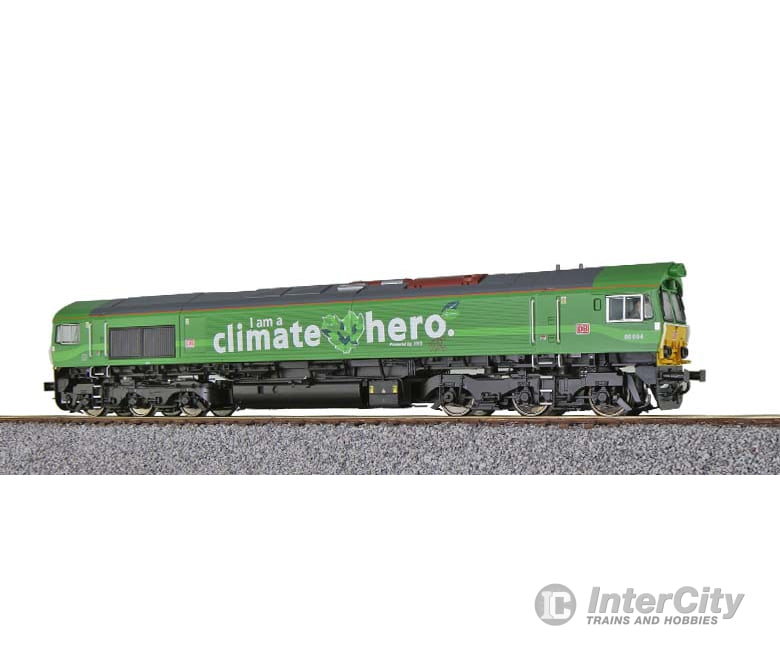Description
- Metal body, frame and transmission boxes
- Open-broken fans in the roof area
- Multicolored driver's cab with train driver figure
- Multi-part bogie covers
- Separately attached handle bars and steps
- Clutch in backdrop-guided NEM shaft
- Five-pole ESU motor with two flywheels
- Drive via gimbal/screw transmission on four axles, four traction tires
- LokSound decoder for DCC, Motorola®, M4 and Selectrix operation
- Independent registration at centrals with RailComPlus® or mfx® functionality
- PowerPack storage capacitor for uninterruptible power supply
- Double speakers with large sound capsule for maximum sound enjoyment
- Load-dependent smoke generator, synchronous with the LokSound
- Digitized original sounds
- Sensor-controlled noise when cornering slowly
- Direction-dependent light change, country-specific light functions, train-side peak signal can be switched off, driver's cab and driver's desk lighting can be switched
- Brake sparks during sharp braking
- Pipette for filling the smoker generator, buffer carrier accessories and a second clutch are included
- Minimum passable radius = 360 mm
- Length over buffer = 247 mm
From 2001, the American Electro-Motive Division (EMD) with the Class 66 already tested in Great Britain offered the Continental European Railway Companies (EVU) comparatively inexpensive route diesel locomotives for heavy freight trains. The six-axle tractors known as JT 42 CWR are based on the simple-built and very reliable American SD40-2. From 1999, Häfen und Güterverkehr Köln AG HGK was the first railway company to use two of the diesel-electric Class 66. Since 2006, the modified JT 42 CWR M has been a second series of Class 66, which is often referred to as Class 77. The most striking external difference to the first series is the single door to the engine room installed on the left side of the locomotive. Class 66/77 can also be found today in France, Belgium, the Netherlands, Luxembourg, Denmark, Norway and England. A total of about 650 locomotives were delivered to European customers. The elongated silhouette adapted to the small English clearance profile, the angular structure and the chassis with the massive bogies and the wild line guidance make the Class 66 unmistakable. The GM twelve-cylinder two-stroke engine 12N-710G3B-EC develops an output of 3194 hp (2350kW). The starting train force is 409 kN, the continuous train force 260 kN. With a maximum speed of 120 km/h, the Class 66 can compete with other trains even on main routes. Despite the high noise level in the driver's cab, the locomotives have earned a good reputation among train drivers when it comes to getting heavy trains off the spot even on slippery rails. Numerous locomotives from other European private railways or lessees are also on the road in Germany. In order to save the shunting locomotive, the locomotives usually remain pre-tensioned from the sender's siding to the destination of the train, assuming that the locomotives are also under contact wire.


